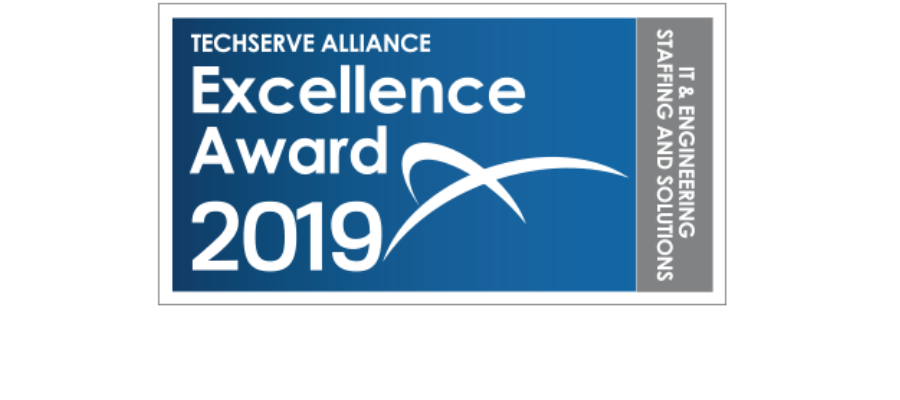Companies face a number of common pitfalls when building out IT departments, and many of them center around three straightforward-yet-hard-to-master approaches when seeking talent. As TriCom’s director of recruiting likes to say: Successful technical recruiting is a lot like getting fit. We can tell you how (hint: eat right and exercise; count your calories in against calories out), but it’s the actual doing it that’s hard (i.e., the discipline, consistency, and measurement).
By getting a handle on the three recruiting strategies outlined below, you may find that the war on talent is easier to win than you first thought.
Hire for the Future
Most organizations today still align their talent acquisition KPIs with metrics such as candidate submissions, candidate interviews, time to fill, and start dates, all of which put the cart before the horse. These metrics do matter, but the main metric companies should start with centers on one very simple question: Are you currently building a team of A and B players who stick, stay, and are successful together? If you are—and have the data to show it—you can stop reading and move on (and email me about how you did it!).
Most firms today are not hiring IT talent well, and it starts with alignment. As Recruiting Guru Lou Adler says, “Don’t hire for the start date, hire for the anniversary dates.” Amen, Lou! First, figure out if what you’re doing now is working. It doesn’t matter if you can hire great people if they don’t stay more than a couple years, or worse, they’re brilliant jerks who do stay but nobody else wants to work around them. Begin with an end in mind. The key is to build wildly successful technology teams who have tenure.
Today, the vast majority of HR, procurement, and talent acquisition teams miss out when they overlook the forest for the trees. Each year, keep a running document that tracks your hiring: Who did we hire? Are they still here? Are they good or great at their job? If you don’t know the answers, you will not be allowed to pass “Go” and get your $200. Hold everyone accountable, including IT directors, CIOs, managers, and anyone else who makes final decisions on who gets hired. Many times, hiring decisions are left to HIPPOS—the HIghest Paid Person’s Opinion (yes, opinion with all kinds of bias). Make these folks’ performance reviews reflect how well they build a team of top performers with tenure. You’re well on your way if you’ve already got the data on this.
Keep It Brief
A short, easy, and pleasant candidate journey is crucial to getting the best and brightest! My second recommendation is to know the overall talent marketplace for IT skilled professionals and plan accordingly. Try to keep your interview process inside two weeks because, fairly or not, you risk losing A players when it takes longer. The demand for these professionals is at an all-time high and going higher still. When every organization already is—or is in the process of becoming—a “tech firm”, it’s vital to approach these highly sought-after people like gold. We are in the beginning stages of the digital age, and they are the ones building it. When you throw in the advent of remote work with some of the biggest firms going 100% remote, there is no putting the genie back in the bottle any time soon. IT professionals can now choose from companies in the east, west, north, or south. In fact, many are looking around nationally because COVID made working from home a necessity.
Many business leaders have been surprised that working from home has gone so well. Productivity rose instead of declined. So, even if you have the latest and greatest tech stack, a wonderful culture, and a collaborative team, these assets don’t always carry the same weight in a borderless marketplace for talent. The multitude of great companies with great opportunities has now multiplied a hundred times! You’re now competing with the likes of Amazon, Facebook, Google, Apple, Microsoft, Oracle, Tesla and everyone else.
This current IT talent environment is a scarcity market. Most hiring processes were built on the premise of a supply market. It can take days to set interviews, followed by even more days to get feedback. When you factor in extra days to set second, third, or even fourth interviews, it all adds up to a hazardous model that we’ve stuck with for far too long. If you want the best in IT, they simply won’t stick around for this.
Gartner recently reported that 7 in 10 IT skilled professionals have at least two offers once they engage in interviews. All this is to say that the applicant-to-candidate-to-offer journey must be built to combat the competition. Don’t hamstring your ability to bring on the best and brightest with an outdated, supply-side model that might work in other departments, but not in times like these for IT.
Value “Who” Over “What”
My last recommendation might sound trite, but I would say it’s the main reason TriCom has become a best-in-class IT workforce solutions firm. It’s all over our website: “Who matters more than what.”
Most tech hiring today starts with a list of skills (3 years of X, 2 years of Y, certification with Z, etc.). Skills do matter, of course, but they don’t matter nearly as much as most hiring authorities think. As my COO likes to point out, “People are hired for what they know, but they’re fired for who they are.” Character, attitude, aptitude, and motivation are bigger factors of successful hiring than anything else. Moreover, if you hire based on a person having lateral skills, guess what you hired? A person who might start looking for another lateral transfer opportunity that will garner them $5,000 more a year as soon as it becomes available.
People stay on jobs to learn new skills; to stretch, grow, and feel rewarded and recognized for good work. IT folks view their jobs like most other people—they’re rewarding because they’re challenging. Hiring today has devolved into a manufacturing process that’s outdated. Matching resumes to job orders and keying in on certain terms might net you someone who knows what they’re doing. Or it might not! Start with who the person is, what they want to do, and what they’re good at. Obviously, you want someone who has baseline skills, but more than that, try to find who would be a great coworker, take initiative, and continuously learn and evolve.
The tools change and will keep changing. Start with the deliverables of the job and what success looks like, not how many years of experience equates to mastery. In my 31 years of IT staffing, I can say that I’ve met more rockstar developers who taught themselves how to code (in their spare time for fun) than those who are degreed computer science graduates. And most of those high performers like to keep learning, growing, and challenging themselves with the latest and greatest.
Living Proof
I graduated college with degrees in Psychology and Speech Communication from Iowa State University (Go Clones!). My GPA was 2.97. Most people would not pick me to be able to start and grow a $25 million business from scratch (I certainly wouldn’t have). What mattered most was inside me. Hire for what’s inside—the who. Use assessments to weed out bias (tons of it still exists out there), implement behavioral, structured interviews, and then look for what a person has done successfully. Then, ask yourself if those deliverables translate to what your firm needs. This is hard, encompasses rethinking job descriptions, and takes some trial and error.
Don’t fall into the trap of using years of experience in particular tech roles as a guidepost. Start with who, look for why they’d stay with you for five years or more, what they’d learn, and how their character fits within your organization. If you can cultivate this new way of thinking while keeping your interview process brief and hiring for the anniversary date, there should be no stopping you in your recruitment efforts.
Reach out to TriCom today to learn more about how our workforce solutions can help you secure the best and brightest IT talent for your organization.






